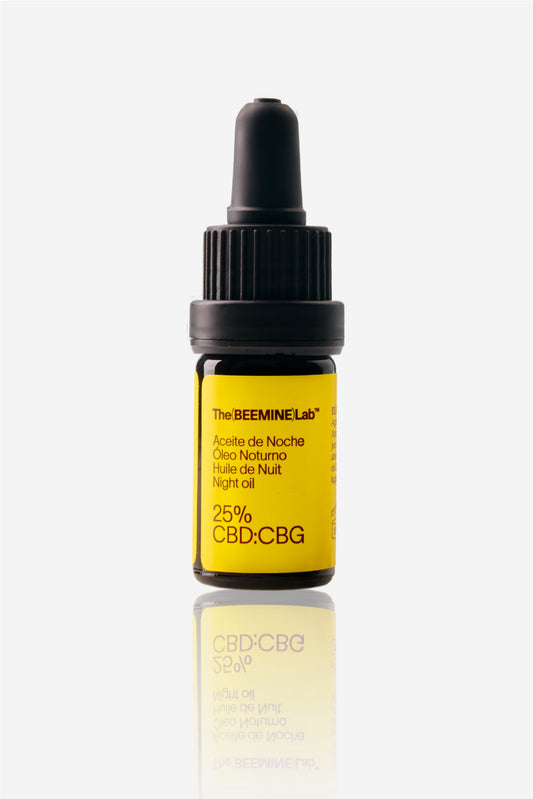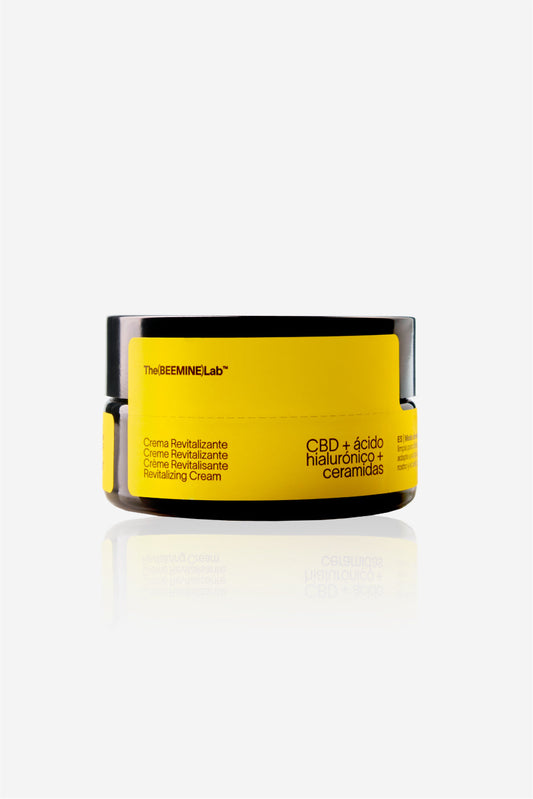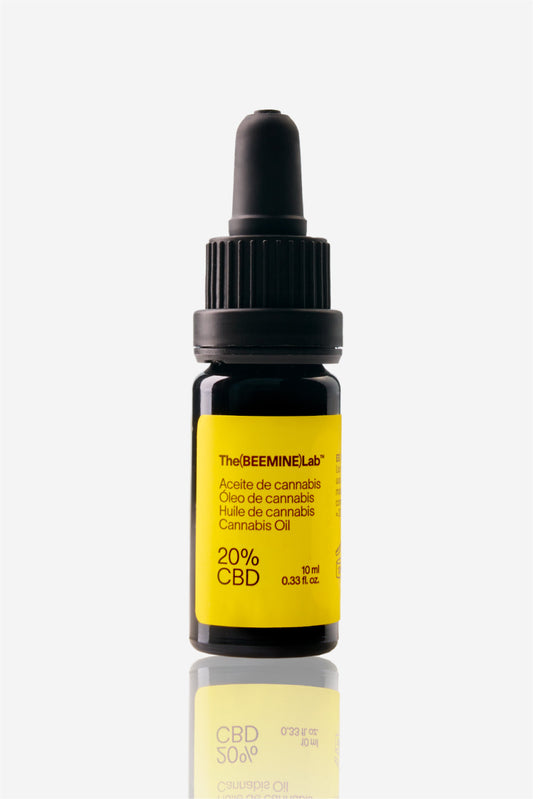What is rosacea? characteristics and symptoms
Rosacea or couperose is considered a chronic inflammatory dermatosis that primarily affects the skin of the face but can also affect the eyes. It is characterized by persistent facial erythema with or without edema, transient episodes of flushing , redness , telangiectasias (easily visible dilated capillaries), and even papules and pustules (pimples). This pathology is also known as acne rosacea, since the papules and pustules resemble those produced by adolescent acne, although in this case there are no comedones. Many rosacea patients also have dry and irritated eyes and eyelids, which is known as ocular rosacea. For some people, eye symptoms precede skin symptoms and are often quite bothersome and limiting (1)(2) . Rosacea can be confused with acne , dermatitis or skin sensitivity. Therefore, it is very important that this condition is diagnosed and treated by a dermatology specialist in order to apply the appropriate treatment and keep its symptoms under control. Four types of rosacea have been identified, each with its respective symptoms (1)(2) :Erythematous-telangiectatic rosacea
This is the most common type of rosacea. The most characteristic symptom is the appearance of redness in the facial area , especially in the cheeks and chin. The skin is inflamed and very sensitive to touch, so it can easily hurt and burn.Papulopustular rosacea
In this case, rosacea is accompanied by pimples, giving the appearance of acne. The redness is still present but is less intense than in the previous case. It affects the face area but also the neck and chest.Phymatous Rosacea
In this type of rosacea, the affected areas of the skin (nose and cheeks) gradually thicken due to inflammation of the sebaceous glands. In phymatous rosacea, the skin appears rough, with broken spider veins, internal lumps and very dilated pores.Ocular Rosacea
It affects the eyelids, eyelashes and eyes, and can sometimes be accompanied by rosacea on the face. Large blood vessels appear in the area of the eyeball, causing itching, tearing and burning, as well as inflammation of the eyelids and styes.Causes of Rosacea
The pathogenesis of rosacea is not entirely clear , but it is believed that factors such as genetics , neurovascular dysregulation , immune and environmental factors play a fundamental role in the appearance of this pathology. A genomic study carried out in European patients with rosacea determined the existence of two single nucleotide polymorphisms in these individuals, suggesting that certain genes have a predisposition to the development of rosacea (3). Immune dysregulation has also been shown to be an important component in the pathogenesis of rosacea . High levels of cytokines and antimicrobial peptides such as LL-37 are produced in this type of condition and are constitutively expressed in neutrophils, mast cells, macrophages and monocytes (cells involved in the innate immune system response). In the skin of people with rosacea , LL-37 is expressed at higher levels and is processed into shorter fragments. Shorter fragments of LL-37 have antimicrobial and immune-activating properties. When injected into mice, LL-37 fragments have been shown to cause erythema , vascular dilation , flushing and telangiectasias , symptoms characteristic of rosacea. In addition, mast cells are likely to play an important role in the pathogenesis of rosacea . LL-37, which is secreted by mast cells, influences mast cell activity by inducing chemotaxis, degranulation, and the release of proinflammatory cytokines. In a study using a mouse model, injection of LL-37 into mice depleted of mast cells did not produce any inflammation. When mice were reconstituted with mast cells, injection of LL-37 produced inflammation, suggesting that mast cells promote the inflammatory state of rosacea (3) . Transient receptor potential (TRP) cation channels that are widely expressed in neuronal and non-neuronal cells such as keratinocytes and endothelial cells have increased the understanding of the pathogenesis of rosacea . ??Activation of TRPs leads to the release of mediators of neurogenic inflammation and pain, such as substance P and calcitonin gene-related peptide. These vasoregulatory neuropeptides are critical mediators that induce the sustained flushing characteristic of rosacea. The expression of these receptors is increased in the skins of rosacea patients, which would explain the sensitivity of this skin to external factors such as heat, ethanol, perfumes and herbal extracts that induce the activation of these channels and trigger the onset of symptoms (3) . Finally, it is known that environmental factors such as ultraviolet radiation are one of the main triggers of rosacea, as they can cause redness and worsening of symptoms. Exposure to UVA rays leads to a degeneration of dermal collagen that is commonly observed in skin with rosacea. In addition, in this condition there is a high accumulation of reactive oxygen species (ROS) that promote the production of inflammatory mediators by keratinocytes and fibroblasts, leading to redness and other characteristic symptoms (3) .How to care for skin with rosacea?
To prevent the appearance of rosacea, you must mainly avoid the factors that trigger it and follow an appropriate care routine: 1- Proper cleaning It is important to maintain good skin hygiene using mild cleansers, especially for sensitive skin and rosacea. Products such as micellar waters, cleansing milks and thermal waters can be used, always avoiding soaps and abrasive components. These products should contain soothing and moisturising active ingredients and it is very important that they do not need to be rinsed off with water, as this will prevent the symptoms from worsening. 2- Good hydration The next step after cleansing is always good hydration. It is essential to use moisturizing and soothing products that can be lotions or creams and that also contain vascular-protective properties to improve circulation in the area and reduce the burning and itching sensation. 3- Do not use exfoliants or chemical peels It is important to avoid exfoliating the skin with chemical products or performing peels, as this will worsen the symptoms even more. If necessary, enzymatic exfoliants can be used, which are gentler and less aggressive for delicate skin. 4- Always use sunscreen It is very important to use a sunscreen with a high SPF, minimum 30 and maximum 50, after your cosmetic routine. This will mitigate the effect of UVA and UVB radiation on the skin and prevent damage to the skin to a greater extent. Excessive sun exposure and the central hours of the day should always be avoided. 5- Avoid stress Rosacea has been shown to have an emotional component. Avoiding stress or intense emotions is crucial to prevent the onset of symptoms. It is advisable to perform meditation and relaxation exercises to maintain a balanced emotional state and, above all, to get enough sleep at night. 6- Moderate consumption of alcohol and spicy foods Eating spicy foods or dishes with spices can cause dilation of blood vessels and produce the dreaded telangiectasias. Alcohol also causes vasodilation in the capillaries and redness of the skin. Therefore, it is very important to avoid these types of foods and drinks and to eat a balanced diet rich in vitamins and minerals above all.
Can CBD be useful for treating rosacea? What evidence is there for its effectiveness?
Rosacea is known to be an inflammatory condition that mainly produces symptoms such as erythema, redness, burning, and telangiectasias, among many others. Cannabidiol (CBD) has been shown to have anti-inflammatory and soothing effects on the skin, so it could be very useful for treating this condition. CBD works by exerting its function through the endocannabinoid system (ECS) found in our body. This system is made up of endocannabinoid receptors that respond to CBD, so if there is an imbalance in the body, this active ingredient could restore balance through different mechanisms of action: 1- Anti-inflammatory effect CBD binding to the ECS endocannabinoid receptors is known to reduce inflammatory markers and inhibit the entire inflammation process associated with this condition. Clinical studies have confirmed that activation of the CB2 endocannabinoid receptor leads to decreased levels of ROS (reactive oxygen species) and TNF-?, thereby reducing oxidative stress and inflammation. Therefore, it has been suggested that CBD may indirectly enhance anti-inflammatory effects. Furthermore, cannabidiol has been shown to reduce levels of pro-inflammatory cytokines, inhibit T cell proliferation, and reduce immune cell migration and adhesion. Therefore, symptoms such as erythema or flushing can be significantly reduced with topical application of this active ingredient (4)(5)(6) . 2- Soothing and anti-itching effect Experiments in several skin disease models show that individual modulation of CB1, CB2 or TRP channels reduces pruritus. These antipruritic effects occur at central and peripheral levels. In the CNS, antipruritic effects are mediated primarily by CB1 receptors, consistent with their activity as the main centrally acting cannabinoid receptor. In the periphery, the activity of both CB1 and CB2 is thought to induce analgesia, thereby also exerting a calming effect. Skin inflammation is one of the main factors contributing to the pathogenesis of pruritus, and this is due to the action of local inflammatory factors such as histamine, cytokines and neuropeptides that act as pruritogens. CB2 is widely expressed in peripheral immune cells and in most studies the binding of CBD to CB2 receptors decreases inflammation, thus greatly reducing the pruritus associated with rosacea (7) . 3- Anxiolytic effect Anxiety and stress can be triggers for rosacea, so controlling these symptoms is very important to prevent flare-ups from occurring continuously. Cannabidiol has an anxiolytic effect on the body and does so by binding to the CB1 and CB2 receptors of the ECS, where it regulates dopamine levels and balances our emotional state. In addition, it is able to balance the plasma levels of hormones such as cortisol that participate in the response to stress and in this way protects the body's cells from possible damage that may occur in tissues and organs (8)(9) . 4- How is CBD used to treat rosacea? As mentioned above, the causes of rosacea are not entirely clear, but it is known that some factors are responsible for its pathogenesis, so the treatment of this condition involves controlling these factors and reversing the symptoms. The skin has endocannabinoid receptors to which CBD binds and exerts its regulatory functions. For topical symptoms, cannabidiol can be used in the form of a cream or oil, and in this way symptoms such as redness, telangiectasias and itching will be reduced. In addition, CBD is a great ally to reduce states of anxiety and stress, so when administered sublingually, it balances the emotional state and prevents the appearance of rosacea. Literature:- https://medlineplus.gov/spanish/rosacea.html
- https://www.mayoclinic.org/es-es/diseases-conditions/rosacea/symptoms-causes
- Christine SA and William WH(2017). Rosacea Pathogenesis. Dermatol Clin , 36 (2), 81-86.
- Costache, Daniel Octavian, Constantin, Carolina, Calina, Daniela, Caruntu, Constantin, Costache, Raluca Simona, Caruntu, Ana (2020). Cannabinoids in the Pathophysiology of Skin Inflammation. Molecules, 25 (3) , 652 –.
- Atalay S., Jarocka?Karpowicz I. and Skrzydlewska E.(2020). Antioxidative and Anti?Inflammatory Properties of Cannabidiol. Antioxidants , 9 , 21.
- Muñoz, E. Cannabinoids and Inflammatory Skin Diseases. Canna Foundation
- Avila C, Massick S, Kaffenberger BH, Kwatra SG, Bechtel M, Cannabinoids for the Treatment of Chronic Pruritus: A Review, J ournal of the American Academy of Dermatology (2020), doi: https://doi.org/10.1016/ j.jaad.2020.01.036.
- Bih, CI; Chen, T.; Nunn, AVW; Bazelot, M.; Dallas, M.; Whalley, B.J. (2015). Molecular targets of cannabidiol in neurological disorders . Neurotherapeutics , 21 (23), 699-730.
- Sallaberry, C. A., & Astern, L. (2018). The Endocannabinoid System, Our Universal Regulator. Journal of Young Investigators , 34 .







